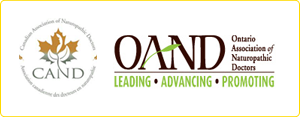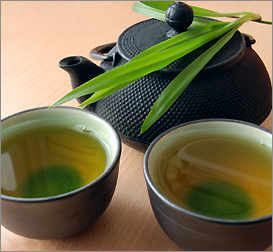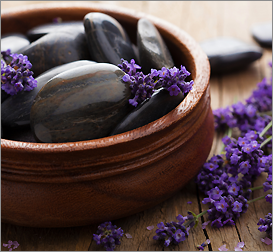Menopause is a normal part of the aging process that all women will experience within their lifetimes. (3) Most often occurring naturally, menopause typically lasts for several years, with women experiencing menopause for up to 40% of their lives. (10)(14) The average age of menopause is between 45 and 52 years old, with two thirds of women experiencing at least some of the associated symptoms. (3)(7)
Fortunately, decades of research have allowed us to better understand menopause, symptoms associated with it, and how to treat them, greatly improving the overall quality of life for women as they age.
Stages of menopause
The menopause transition is identified by the absence of a menstrual period (amenorrhea) for 12 consecutive months, which marks the end of the reproductive years. (10)(11)(14)
There is no specific test to determine when a woman’s last period will be or when menopause symptoms will stop. (10) While the onset of menopause typically occurs after the age of 45, women can enter menopause earlier in life. Premature menopause, or early menopause, occurs when a woman enters menopause before the age of 40, and can be a result of a variety of reasons, including:
- Lower BMI
- Nulliparity (has not previously given birth to term)
- Smoking
- Surgical menopause due to hysterectomy (removal of uterus) or oophorectomy (removal of ovaries)
- Use of levonorgestrel intrauterine device (IUD) (10)(11)(14)
The Stages of Reproductive Ageing Workshop (STRAWS) have identified three primary stages of reproductive aging, which include the reproductive years, menopause, and postmenopause. (5)(11)(14) Perimenopause was outlined as a secondary stage, with symptoms that can carry on into postmenopause. (5)
Perimenopause
Perimenopause, also known as early menopause, can begin up to three years prior to the final menstrual period (FMP) and can continue into the first two years following FMP. (5)(10) This stage lasts between five and ten years on average, and marks the transition from a woman’s reproductive years into menopause. (4)(11)
During perimenopause, women will begin to experience hormonal changes. Follicular stimulating hormone (FSH) and luteinizing hormone (LH) levels increase, which causes estrogen levels to fluctuate, while inhibin B levels decrease. These hormones directly impact a woman’s ovarian function, resulting in the cessation of ovulation due to the loss of oocyte (immature egg) production. The end of ovulation results in the failure to produce progesterone. While all of these hormonal levels are changing, the ovaries carry on with testosterone production, contributing to the overall hormonal imbalance. These hormonal changes will result in an irregular menstrual cycle and a period of high frequency and severity of menopausal symptoms. (11)(14)
Menopause
Menopause, also known as late perimenopause or late menopause, is marked by the absence of the menstrual period for over 60 days within a period of twelve months. Perimenopausal symptoms generally continue into this stage, but may begin to decline in frequency and severity. (10)(11) Many of the signs of menopause overlap with the signs and symptoms of perimenopause.
Postmenopause
Postmenopause starts the first year after the FMP and signifies the stage of a woman’s life after FMP and menopause. Most women are finished menopause by age 60, although women can experience symptoms into their 80s. (11) During this stage, women will have lower estrogen levels and high FSH levels due to years of irregularities in their ovarian function. (14)
Signs and symptoms of menopause
By the year 2030, there will be over one billion women worldwide entering one of the stages of menopause, with 85% experiencing psychological and/or physical symptoms. (7) The type and severity of symptoms experienced can vary based on the following factors:
- Activity level
- BMI
- Ethnicity
- Geographic location
- History of anxiety and depression
- Medications
- Previous/current illnesses
- Smoking (4)(11)
Vasomotor symptoms
The most commonly experienced and recognized symptoms during menopause are vasomotor symptoms, believed to be a result of low estrogen and other hormonal fluctuations. These symptoms include hot flashes (hot flushes) and night sweats, which tend to affect around 60 to 80% of menopausal women. (4)(14) Vasomotor symptoms can significantly affect quality of life due to their irregularity and sudden onset, which can disrupt sleep, work, and social events. Sleep disturbances caused by vasomotor symptoms account for up to 60% of complaints reported by menopausal women. (11)
The disruption to daily life caused by vasomotor symptoms can also impact mood and cognitive function, such as attention and memory. (11) Vasomotor symptoms can continue throughout all stages of menopause, lasting for up to thirteen years in various intensities. (14)
Vasomotor symptoms such as hot flashes, can be disruptive and reduce overall quality of life.
Hot flashes can begin prior to FMP and continue throughout menopause, with one third of women experiencing them for more than ten years after the onset of FMP. (4) (11) Hot flashes are characterized by random periods of heat that are primarily felt in the upper body and often experienced in conjunction with perspiration, clammy skin, anxiety, and palpitations, followed by a feeling of cold. (4)(14) They can last anywhere between five and thirty minutes and occur several times throughout the day. The symptoms of hot flashes can feel very similar to anxiety or panic attacks. (14)
Night sweats are hot flashes that occur during the night, often disturbing sleep. (14) The average body temperature needed to induce sweating appears to be lowered during menopause, so lower temperatures can cause perspiration. (4)(14)
Risk factors for vasomotor symptoms
There are a variety of risk factors that can impact the frequency and severity of hot flashes and night sweats, including:
- Genetic predisposition
- History of anxiety
- Intake of alcohol, hot beverages, and spicy or hot foods
- Medications
- Stress
- Warm environments (4)(14)
Vasomotor symptoms prevention and management
The following recommendations may help prevent and manage vasomotor symptoms:
- Dress in layers
- Keep a clean and dry pair of clothes nearby
- Keep a fan nearby
- Maintain cool room temperatures
- Use self-cooling gel pillows (10)
Urogenital symptoms
As a result of the decline in estrogen levels that occurs throughout menopause, there is a decline in the production of collagen, elastin, and moisture in the body. (11) Along with contributing to visible signs of aging, such as wrinkles and creases, these changes affect general vaginal health, resulting in vulvovaginal atrophy (VVA), a condition that causes vaginal inflammation, dryness, and thinning of the vaginal walls. VVA can result in tearing causing bleeding after menopause. (14)
It is estimated that almost half of menopausal women experience urogenital and VVA symptoms. Many do not pursue treatment options due to shame or embarrassment, and those who do are often not properly diagnosed. (14) Symptoms during menopause that affect the vaginal and urinary tract include:
- Atrophic vaginitis (inflammation)
- Dry and thin vaginal lining
- Dyspareunia (painful intercourse)
- Dysuria (painful urination)
- Fluctuation in vaginal bacteria
- Higher pH
- Incontinence
- Increased frequency and urgency of urination
- Increased risk of urinary tract infections (UTIs)
- Irritation
- Narrower and shorter vagina
- Nocturia (nighttime urination)
- Vaginal fissures (tears) (8)(10)(11)(14)
The following treatment options have been shown to help some urogenital symptoms:
- Probiotics
- Vaginal lubricants
- Vaginal moisturizers (8)
Other common symptoms
Many other symptoms are associated with the menopause transition, including:
- Anxiety
- Cardiovascular disease (CVD)
- Change in body shape due to more centralized adipose tissue (fat)
- Increased skin aging, characterized by wrinkling and creasing
- Change in cognitive function, such as memory loss
- Depression
- Increased facial hair
- Migraines
- Osteoporosis
- Poor quality of sleep
- Thinning hair on the scalp
- Weight gain and metabolic changes due to insulin resistance (11)
Having a history of depression can increase a woman’s likelihood of experiencing menopausal depression up to five times. (4) Women are at a two to four times greater risk of depression during menopause than in their reproductive years. (4)(14)
Talk to your healthcare provider to discuss what menopausal symptom treatment options are best suited for you.
Menopause symptom support
Many treatment options are available to help prevent and manage the symptoms of menopause, such as pharmaceutical medications (hormonal and non-hormonal), natural health products, cognitive therapies, and various lifestyle changes.
Estrogen Therapy (ET) and Hormone Therapy (HT) are hormonal medications prescribed to address the various symptoms that come with menopause. (12)(14) Most research examining treatment options for menopause focus on ET, which has been shown to be an effective intervention in the treatment of vasomotor and urogenital symptoms when used orally, transdermally, or as a vaginal ring. (14)
However, the 2002 Women’s Health Initiative Study (WHI) identified many of the associated risks of ET and HRT. These therapies may increase a woman’s risk of:
- Coronary artery disease (CVD)
- Gallbladder disease
- Incontinence
- Invasive breast cancer
- Nausea
- Stroke
- Tender breasts
- Vaginal bleeding
- Venous thrombosis (3)(10)(14)
Menopause supplements for symptom support
Approximately 50 to 75% of women in the United States have used a natural health product to help alleviate menopausal symptoms. (14) The popularity of natural health product use tends to be the highest among peri- and postmenopausal women. While there are a variety of popular supplements used to help address the symptoms of menopause, more evidence is needed to demonstrate their efficacy, safety, or both. (3)
Black cohosh
Black cohosh is a highly researched herbal supplement used for menopause symptoms. This medicinal herb is believed to have estrogenic effects, however, there is currently a lack of research to support this claim. Research does suggest that it may help to alleviate hot flashes and mood disturbances due to its effect on serotonin receptors. In a randomized controlled trial (RCT) of 62 menopausal women conducted over a period of three months, black cohosh supplementation resulted in a significant improvement in menopausal symptoms. (3)
Black cohosh is not safe to use for pregnant or lactating women. Potential side effects of using black cohosh can include dizziness, headaches, and mild digestive issues. (3)
St. John’s wort
St. John’s wort may be an effective treatment option for women experiencing mild depression as a result of menopause. St. John’s Wort has been shown to have similar benefits to anti-depressants and better results than placebos in the majority of clinical trials. (1)(3) In a clinical trial of 911 women in various stages of menopause, improvements in menopausal symptoms such as minor depression, mood, and insomnia, were observed when combining St. John’s wort with black cohosh. There are minimal side effects associated with its use, however, it’s important to note that this medicinal herb has the potential to interact with various pharmaceutical medications, including oral contraceptive medications (the birth control pill). (3)
Chaste tree
Used to regulate menstrual cycles, chaste tree, also known as Vitex-agnus castus, has shown to be beneficial for women going through perimenopause who are experiencing irregular periods due to its progesterone-like effects. For years, it has been a popular medicinal herb used and approved in Germany to treat PMS symptoms and irregular menstruation. However, there is currently little research on its efficacy for other symptoms of menopause. (3)
Probiotics
Menopausal women are more likely to experience vaginal infections. (8) Fluctuations in hormone levels, specifically decreased estrogen, can result in changes in vaginal bacteria levels and decreased availability of Lactobacilli bacteria. (8)(13) These imbalances can result in an increased risk of urinary tract infections (UTIs), bacterial vaginosis (BV), and vulvo-vaginal candidiasis (VCC), which can lead to an increase in other vaginal health issues and sexually transmitted infections (STIs). (2)(8)(13)
Positive benefits have been demonstrated when using oral and vaginal probiotics in the prevention of vaginal infections in post menopausal women, but further research is needed to determine specific effective strains and further support these claims. (8)
Mental health interventions such as support groups, may be beneficial in helping women adapt to the symptoms and changes that come with menopause.
Mental health support
In addition to traditional hormone therapy and supportive dietary supplements, women going through menopause may benefit from specific mental health interventions, such as Cognitive Behavioral Therapy (CBT), Biofeedback and Relaxation Training, and awareness and support groups. These options can help women be better equipped to handle and adapt to the symptoms and changes experienced during the menopause transition, resulting in a more positive outlook on menopause and aging. (9)
The bottom line
Menopause is a normal part of aging. It is important to stay informed, educate yourself on the signs, symptoms, and what to expect.
If you are a woman in Ontario, Canada, and you’re trying to navigate perimenopause or menopausal symptoms, contact me. We can arrange a free 15-minute chat, to determine whether we would be a good fit to work together.
Call (647) 372-0062 or email support@DrLindaBrownND.com
*Virtual Appointments are available.


















